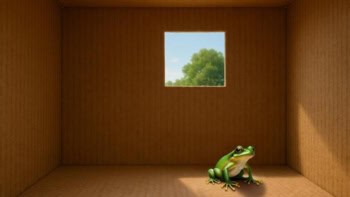
Can a transparent material with large holes in it block light? Normally the answer would be no, but researchers in France have now shown that a web-like structure made up of an array of evenly spaced nanorods appears to block almost 100% of light at a specific wavelength. The counter-intuitive “photonic nanoweb” might be used to make a new generation of optical devices, including light filters and sensors.
The nanoweb was made by Stéphane Collin’s team at the Laboratory for Photonics and Nanostructures in Marcoussis, France. Its ability to block light confirms a theoretical prediction made several years ago: that a structure resembling a type of diffraction grating made of nanorods regularly ordered in a 2D array would perfectly reflect light of a specific wavelength.
The array consists of transparent freestanding dielectric silicon-nitride nanorods around 500 nm thick that are lined up in a single layer of rows 3 µm apart (see figure). The rods only cover 15% of the surface area and the rest of the structure is empty space. Despite this simplicity, its construction was a significant challenge, according to the team.
From transparent to opaque
The 2D array allows a broad range of light wavelengths to pass through it, as expected, but infrared light that has a wavelength of exactly 3.2 µm is almost totally reflected from the material. “We found that the optical response of the nanoweb changes in a very narrow spectral range and that the structure goes from being transparent to opaque in this range,” explains Collin. “Light with a wavelength of 3 µm is transmitted through the web but the light transmission signal drops sharply at 3.2 µm.”
Although the nanoweb resembles a very sparse diffraction grating, it actually behaves more like a crystal with the rods acting like a monolayer of atoms that multiply scattered light. “The incident light is first scattered by each nanorod and then some of this scattered light impinges on the other nanorods and is scattered again,” says team member Petru Ghenuche. “A constructive interference of light waves builds up from this multiple scattering process in the plane of the scatterers and, finally, the sum of the scattered light is emitted in both the forward and backward directions.”
In the forward direction, the light waves scattered by the rods and transmitted through the rods are cancelled out by destructive interference, leading to perfect optical extinction and 100% light reflection, he explains.
Bragg diffraction, but not quite
The effect is similar to the better-known Bragg diffraction, which occurs in 3D crystal lattices, and both phenomena take place thanks to scatterers with a small cross-sectional area. The difference, however, is that the constructive interference in Bragg diffraction involves a large number of planes, while in the nanoweb almost 100% of photons interact with the scatterers in just a single lattice plane, explains Collin.
Until now, research on nanostructures that interact strongly with light in this way was confined to metallic nanostructures, such as gold nanoparticles. In such nanostructures, collective oscillations of surface electrons – called surface plasmons – strongly absorb or scatter light. The new study shows that these strong interactions can also be produced by a periodic arrangement of freestanding dielectric structures, like silicon-nitride nanorods.
“A huge advantage of our nanoweb structure is that the interaction with light can easily be tuned by varying the period between the nanorods and/or their diameter and is thus not restricted to the range of frequencies of specific plasmons in a given metallic nanostructure,” says Collin. “Being able to block light at visible frequencies, rather than just those in the infrared, is clearly a short-term goal of ours and we are also busy working on nanoweb designs that might be used in light-sensing applications.”
The current work is detailed in Physical Review Letters.



